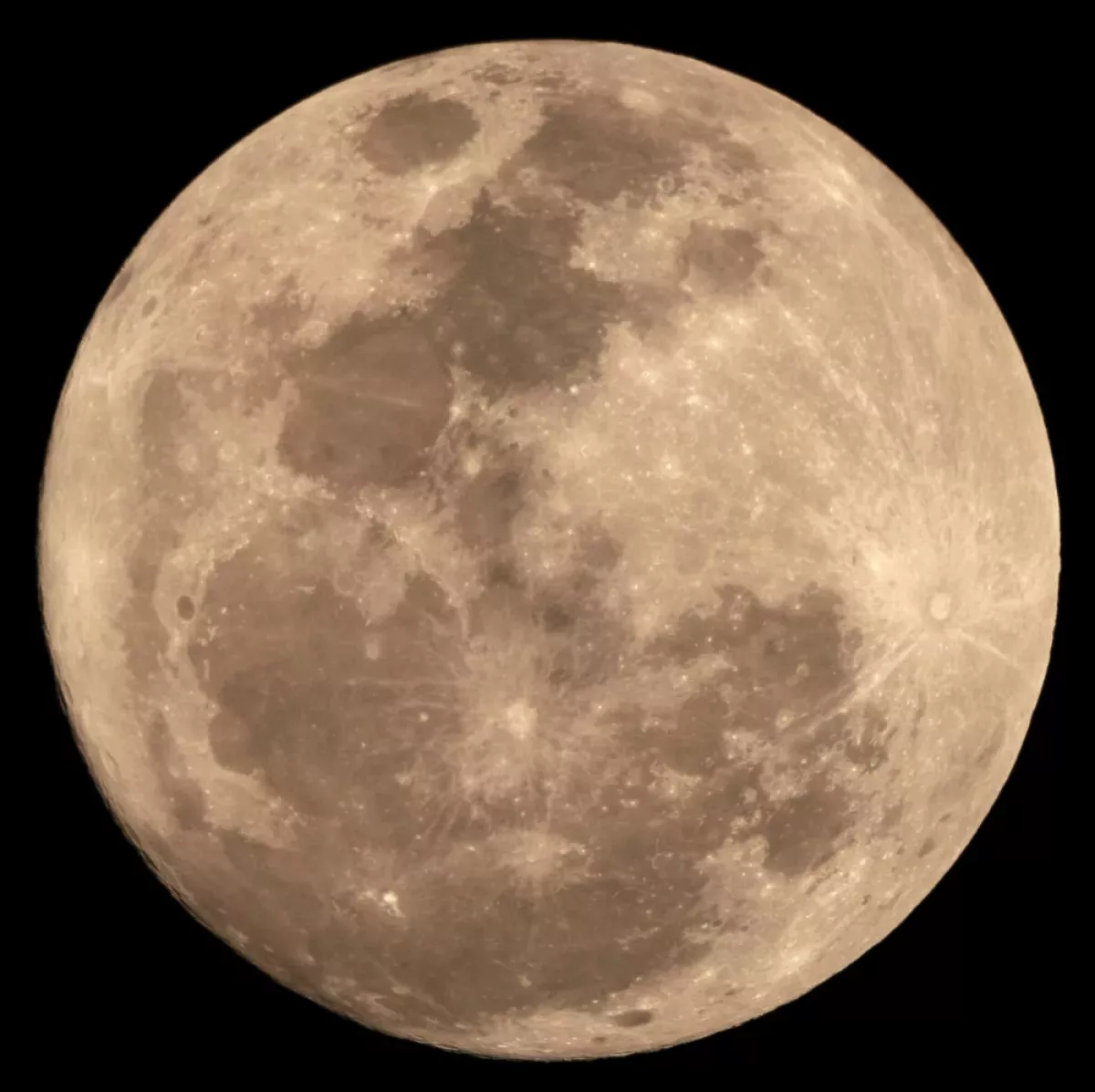A full moon is a lunar phase occurring monthly when the Moon is fully illuminated as viewed from Earth. This happens when Earth is positioned between the Sun and the Moon, causing the entire near side of the Moon to be sunlit. During a full moon, the lunar hemisphere facing our planet appears as a complete, circular disk. This celestial event is a regular occurrence in the lunar cycle.
1918: The American Boy's Book of Signs, Signals and Symbols
In 1918, Daniel Carter Beard wrote in The American Boy's Book of Signs, Signals and Symbols about the varying names for the Indians' Moons in different parts of the country, reducing them to an average list of two names for each lunar month.

1937: Maine Farmers' Almanac full moon names
In 1937, the Maine Farmers' Almanac published a list of full moon names, which it claimed were named by early English ancestors.
1955: The Farmer's Almanac
Since 1955, The Farmer's Almanac (published in Maine, but not the same publication as the Maine Farmers' Almanac) continues to print names of the full moon
1968: Feast of the Hunters' Moon festival start
In 1968, the Feast of the Hunters' Moon, a yearly festival, started in West Lafayette, Indiana, held in late September or early October each year.
1991: Last Harvest moon on the night of the equinox
Before 2010, the last time the harvest moon occurred on the night of the equinox was in 1991, after a period known as the Metonic cycle.
1992: Mysteries of the Moon
In 1992, Patricia Haddock's Mysteries of the Moon gave an extensive list of full moon names along with the tribal groups they were supposedly associated with.
1995: Moon Magick: Myth & Magick, Crafts & Recipes, Rituals & Spells
In 1995, Deanna J. Conway's Moon Magick: Myth & Magick, Crafts & Recipes, Rituals & Spells gave headline names for the lunar months, along with multiple alternative names for each month.
December 2000: Dog bite studies
In December 2000, the British Medical Journal published two studies about dog bite admissions to hospitals in England and Australia. One study found dog bites were twice as common during a full moon, while the other found they were less likely.
September 2007: High lunar standstill
Due to the high lunar standstill, the harvest and hunter's moons of September 2007 were special. The time difference between moonrises on successive evenings was much shorter than average, with the moon rising about 30 minutes later from one night to the next, as seen from about 40° N or S latitude.
2010: Harvest moon on the night of the equinox
In 2010, the harvest moon occurred on the night of the equinox itself, approximately 5 1/2 hours after the moment of equinox, for the first time since 1991.
Mentioned in this timeline
Australia officially the Commonwealth of Australia encompasses the Australian mainland...

Books are a means of storing information as text or...
Indiana nicknamed the Hoosier State is a Midwestern state in...
Maine located in New England is the northeasternmost state in...

September is the ninth month of the year in the...
Trending

3 months ago Brock Bowers' Injury Concerns: Raiders' Crosby Also Added to Injury Report

2 months ago Edison Upgrades South Pasadena Electrical Grid Amidst Storm Recovery, Lifting Evacuation Orders

John Stamos is an American actor and musician who rose to fame as Blackie Parrish on General Hospital earning a...

8 months ago Austin Hays emerges as a top Fantasy Baseball Waiver Wire pickup.

1 month ago Maxxine Dupri, assisted by AJ Lee, dethrones Becky Lynch for Intercontinental Title on Raw!

7 months ago Kiefer Sutherland and Rebel Wilson star in 'Tinsel Town'; First Look Released!
Popular

Tucker Carlson is an American conservative political commentator known for...

XXXTentacion born Jahseh Dwayne Ricardo Onfroy was a controversial yet...

Ben Shapiro is a prominent American conservative political commentator media...

Candace Owens is an American conservative political commentator and author...

William Franklin Graham III commonly known as Franklin Graham is...

Ursula Gertrud von der Leyen is a prominent German politician...

